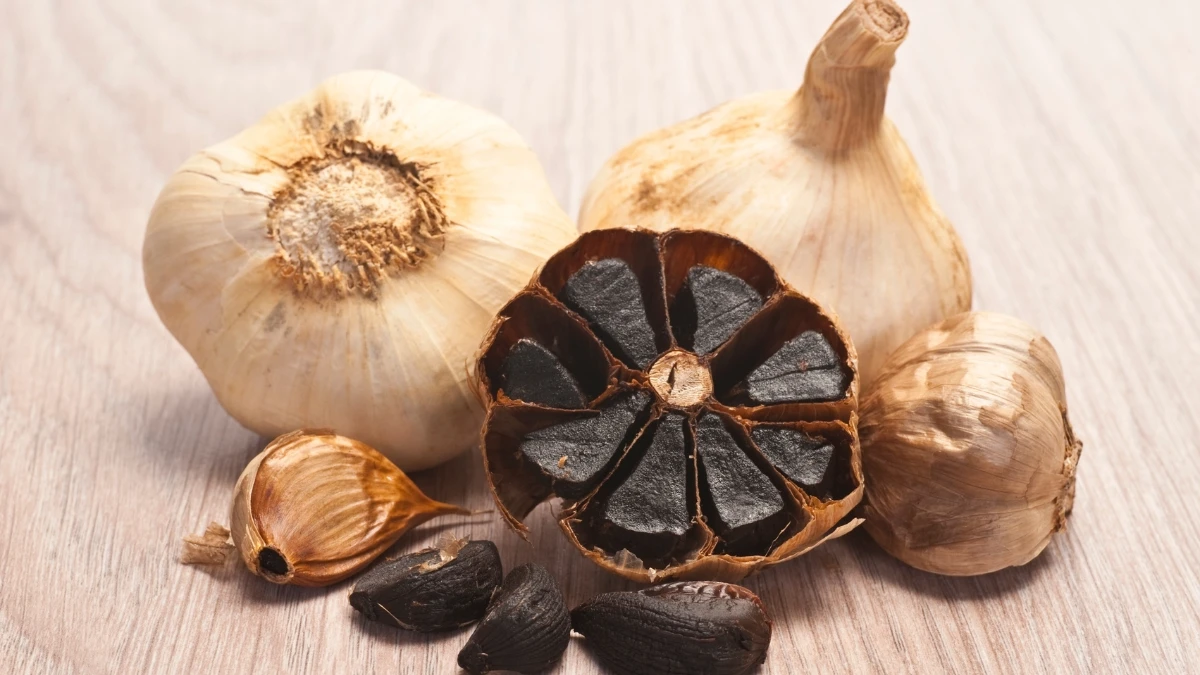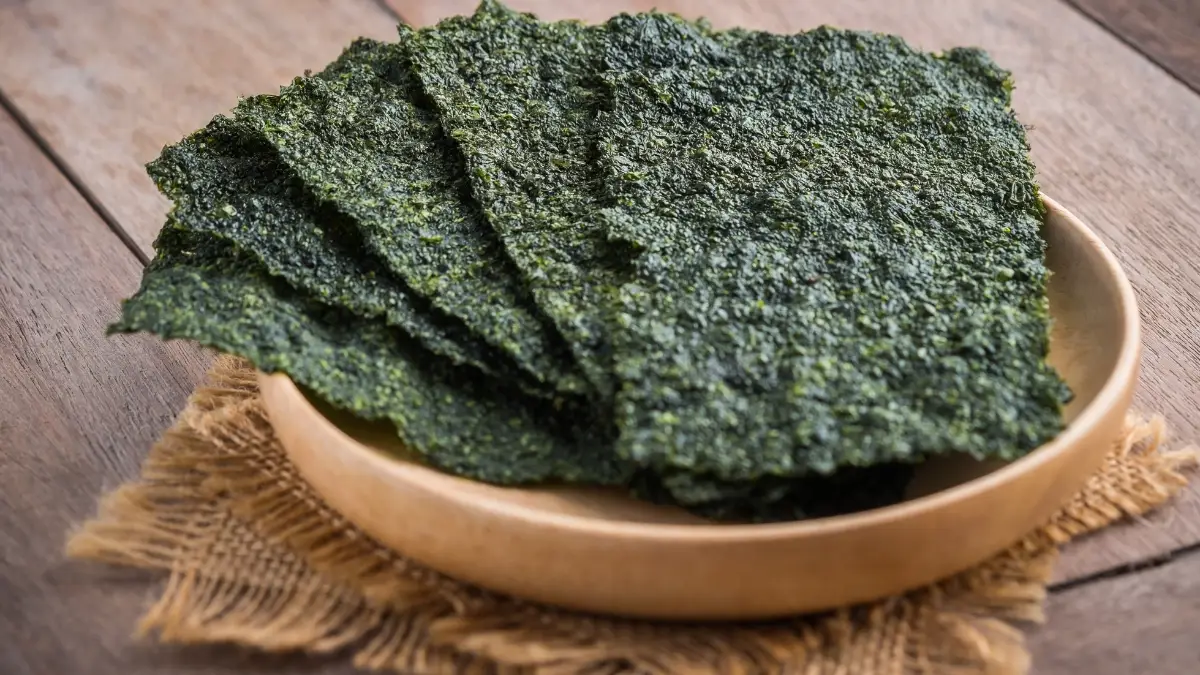Struggling with blood sugar spikes? The right fiber can change everything. Not all fibers work the same—some actively improve insulin sensitivity by slowing digestion, feeding gut bacteria, and balancing glucose levels. Forget boring oatmeal; this list reveals unexpected, science-backed foods that do more than just fill you up.
From fermented black garlic to slimy okra water, these picks tackle insulin resistance in surprising ways. Each one is backed by research and is easy to add to your diet. If you’re serious about steady energy and better metabolic health, these fiber-packed foods deserve a spot on your plate.
1. Tigernuts

Despite the name, tigernuts are small tubers packed with prebiotic fiber. This type of fiber doesn’t just aid digestion—it feeds beneficial gut bacteria tied to better glucose metabolism. Research suggests a healthy gut microbiome can improve insulin sensitivity, and tigernuts deliver a hefty dose of resistant starch to support this process.
They also contain magnesium, a mineral that helps cells respond to insulin more effectively. Unlike sugary snacks, tigernuts have a mildly sweet, nutty flavor without spiking blood sugar. Try them raw, roasted, or blended into smoothies for a fiber boost.
Because they’re rich in insoluble fiber, tigernuts help slow digestion, preventing rapid glucose surges. Studies show diets high in prebiotic fibers may reduce insulin resistance over time. For a simple swap, use tigernut flour in baking instead of refined grains.
2. Green Banana Flour

Unripe bananas turn into a fine flour loaded with resistant starch, a unique fiber that behaves like soluble fiber in the gut. Unlike regular flour, green banana flour doesn’t cause sharp blood sugar spikes. Instead, it ferments slowly, promoting steady glucose levels.
This process encourages the production of short-chain fatty acids, which improve insulin sensitivity. Some studies suggest resistant starch can lower fasting blood sugar by enhancing the body’s response to insulin.
Since it’s flavor-neutral, green banana flour works well in pancakes, soups, or smoothies. Just a small amount thickens dishes while adding metabolic benefits. People with prediabetes may find it especially useful for managing carb-heavy meals without drastic blood sugar swings.
3. Jicama

Crunchy and slightly sweet, jicama is a low-calorie root vegetable with a high fiber content. Its low glycemic index means it releases sugar slowly, preventing insulin spikes. The fiber in jicama, mainly inulin, acts as a natural prebiotic, supporting gut bacteria linked to metabolic health.
Raw jicama works great in salads or as a refreshing snack with lime and chili. Unlike starchy vegetables, it provides bulk without excess carbs. Some research indicates that inulin-rich foods may help reduce insulin resistance by improving gut barrier function.
Because it’s mostly water and fiber, jicama keeps you full without raising blood sugar. For a simple side dish, slice it thin and toss with olive oil and herbs.
4. Psyllium Husk Before Meals

Taking psyllium husk with water before eating creates a gel-like substance in the stomach. This gel slows down carbohydrate absorption, leading to more stable blood sugar levels after meals. Soluble fiber, like that in psyllium, has been shown to improve insulin sensitivity in people with type 2 diabetes.
A small dose (about 5 grams) before high-carb meals can reduce post-meal glucose spikes. Unlike other fibers, psyllium doesn’t ferment much in the gut, so it’s less likely to cause bloating.
Studies suggest regular psyllium intake may lower HbA1c levels over time. Mix it into water or sprinkle over yogurt for an easy way to enhance meal digestion.
5. Black Garlic

Fermented black garlic has twice the fiber of raw garlic, along with compounds like S-allyl cysteine that enhance insulin signaling. The slow fermentation process also increases antioxidant levels, which help combat oxidative stress linked to insulin resistance.
Unlike regular garlic, black garlic has a sweet, umami flavor with no sharp bite. Adding it to meals provides subtle depth while supporting metabolic health. Research indicates its bioactive compounds may improve glucose uptake in cells.
Try blending it into dressings or spreading it on whole-grain toast. Even a small amount daily could contribute to better long-term insulin function.
6. Chia Seeds Soaked in Lemon Water

When chia seeds meet lemon water, something interesting happens. The acidity helps break down the seeds’ soluble fiber, creating a thicker gel that slows digestion even more effectively. This combo doesn’t just keep you full longer—it also blunts blood sugar spikes better than chia alone.
Research shows viscous fibers like those in chia can reduce post-meal glucose levels by up to 40%. The lemon adds a dose of vitamin C, which some studies link to improved insulin sensitivity. Together, they make a simple yet powerful drink for metabolic health.
Try soaking a tablespoon of chia in water with half a lemon’s juice for 15 minutes. The mixture turns pudding-like, making it easy to sip before meals. People with insulin resistance may find this especially useful before carb-heavy dishes.
7. Barley Beta-Glucan

Not all fibers work the same, and barley’s beta-glucan is a standout for insulin health. This specific soluble fiber forms a gel in the gut, slowing sugar absorption and improving how cells respond to insulin. Clinical trials show it can lower fasting blood sugar in as little as 12 weeks.
Unlike refined grains, whole barley retains its beta-glucan content. Even barley flakes or flour work, though pearled barley has slightly less. A bowl of barley risotto or soup delivers a steady energy release without spiking glucose.
Studies suggest consuming 3 grams of beta-glucan daily—about half a cup of cooked barley—can significantly impact metabolic markers. It’s one of the few fibers with an FDA-approved claim for heart health, too.
8. Okra Water

That slimy texture in okra? It’s called mucilage, a type of soluble fiber that acts like a natural blood sugar buffer. When soaked in water, okra releases this gel-like substance, which binds to sugar molecules during digestion. This slows absorption, preventing sharp insulin spikes.
In some traditional medicine systems, okra water is a go-to for glucose management. Modern research supports this, showing it may reduce post-meal blood sugar levels by up to 30%. The key is the fiber’s ability to delay stomach emptying.
To make it, slice a few okra pods and soak them overnight in water. Strain and drink the liquid in the morning. It’s tasteless, so adding lemon or ginger can make it more palatable.
9. Cacao Nibs + Flaxseeds

Pairing cacao nibs with flaxseeds isn’t just for taste—it’s a strategic move for insulin sensitivity. Cacao’s polyphenols enhance blood vessel function, while flaxseeds provide lignans and soluble fiber. Together, they improve glucose uptake in cells.
The fiber in flax forms a gel that traps sugars, slowing their release. Meanwhile, cacao’s flavonoids reduce oxidative stress, a key driver of insulin resistance. Studies show this combo can lower HbA1c levels over time.
Sprinkle them on yogurt or blend into smoothies. Unlike sugary chocolate, cacao nibs offer bitterness without spiking glucose. Just two tablespoons of flax and a teaspoon of nibs daily can make a measurable difference.
10. Konjac Root

Konjac root’s fiber, glucomannan, is one of the most effective for glycemic control. It absorbs up to 50 times its weight in water, expanding in the stomach to create a sense of fullness. More importantly, it forms a physical barrier that slows carbohydrate absorption.
Clinical trials note glucomannan can reduce post-meal blood sugar spikes by nearly half. It’s so potent that some countries approve it as a diabetes management aid. The key is taking it with plenty of water to prevent blockages.
Shirataki noodles, made from konjac, are a zero-carb swap for pasta. Alternatively, mix glucomannan powder into sauces or soups for thickness without calories. Just a gram before meals can significantly flatten glucose curves.
11. Seaweed

Most people don’t think of seaweed as a fiber source, but varieties like dulse and wakame pack a surprising amount of soluble fiber. This type of fiber dissolves into a gel, slowing digestion and preventing blood sugar spikes. Beyond fiber, seaweed delivers minerals like magnesium and vanadium, which help cells respond better to insulin.
Research shows compounds in brown seaweed may block enzymes that break down carbs, reducing glucose absorption. In one study, adding wakame to meals lowered post-meal blood sugar by 20% compared to control groups. The umami flavor also makes it easy to incorporate into soups, salads, or even as a crispy snack.
For a simple boost, toss dried dulse flakes into stir-fries or blend wakame into dressings. Unlike land vegetables, seaweed offers a unique mix of nutrients that support metabolic health from multiple angles.
12. Roasted Dandelion Root

Bitter flavors often signal digestive benefits, and dandelion root is no exception. When roasted, its fibrous compounds stimulate bile production, which helps break down fats and sugars more efficiently. Better fat metabolism means less strain on insulin response over time.
Dandelion root also contains inulin, a prebiotic fiber that feeds beneficial gut bacteria linked to glucose regulation. Unlike coffee, dandelion root tea won’t spike cortisol, making it a gentler option for those with insulin resistance. Some herbal medicine traditions have used it for blood sugar support for centuries.
Try brewing roasted dandelion root as a coffee substitute. The earthy, slightly nutty flavor pairs well with cinnamon or a splash of almond milk. Just one cup daily may help optimize digestion and metabolic function.
13. Baobab Fruit Powder

This African superfood might be unfamiliar, but its benefits for blood sugar are impressive. Baobab powder contains 50% soluble fiber by weight, which forms a slow-digesting gel in the gut. It also has a low glycemic index despite its natural sweetness, making it a smart addition to smoothies or yogurt.
Polyphenols in baobab, like flavonoids and catechins, help reduce oxidative stress that worsens insulin resistance. Studies suggest it can lower the glycemic response to meals by up to 35%. Unlike refined sugars, baobab’s sweetness comes with fiber that buffers its impact on glucose levels.
A teaspoon stirred into water or oatmeal adds a tangy, citrus-like flavor. Because it’s so concentrated, a little goes a long way for both taste and metabolic benefits.
14. Rutabaga

Often overlooked, rutabagas are a fiber-rich alternative to potatoes with half the carbs. Their slow-digesting fibers, including cellulose and pectin, help maintain steady blood sugar levels. Unlike high-starch vegetables, rutabagas provide bulk without triggering sharp insulin spikes.
They’re also rich in sulfur compounds that support liver detoxification, indirectly aiding glucose metabolism. When roasted, rutabagas develop a natural sweetness without added sugars. Mashed or spiralized, they work well in place of higher-glycemic starches.
Research on root vegetables suggests those with higher fiber content, like rutabagas, improve post-meal insulin response compared to refined grains. For a simple side, cube and roast them with olive oil and rosemary.
15. Tempeh

Fermentation transforms soy into tempeh, a protein-rich food with a hidden fiber bonus. The live cultures in tempeh act as probiotics, while its fiber content feeds those good bacteria—a double win for gut health and insulin sensitivity.
Studies show fermented soy products improve glycemic control better than unfermented versions. The fiber-protein combo also slows digestion, preventing rapid glucose surges. Unlike tofu, tempeh’s firmer texture holds up well in stir-fries, salads, or even as a meat substitute.
For maximum benefits, opt for organic tempeh to avoid GMOs. Marinate and pan-fry it for a hearty, metabolic-friendly meal that keeps blood sugar stable for hours.


